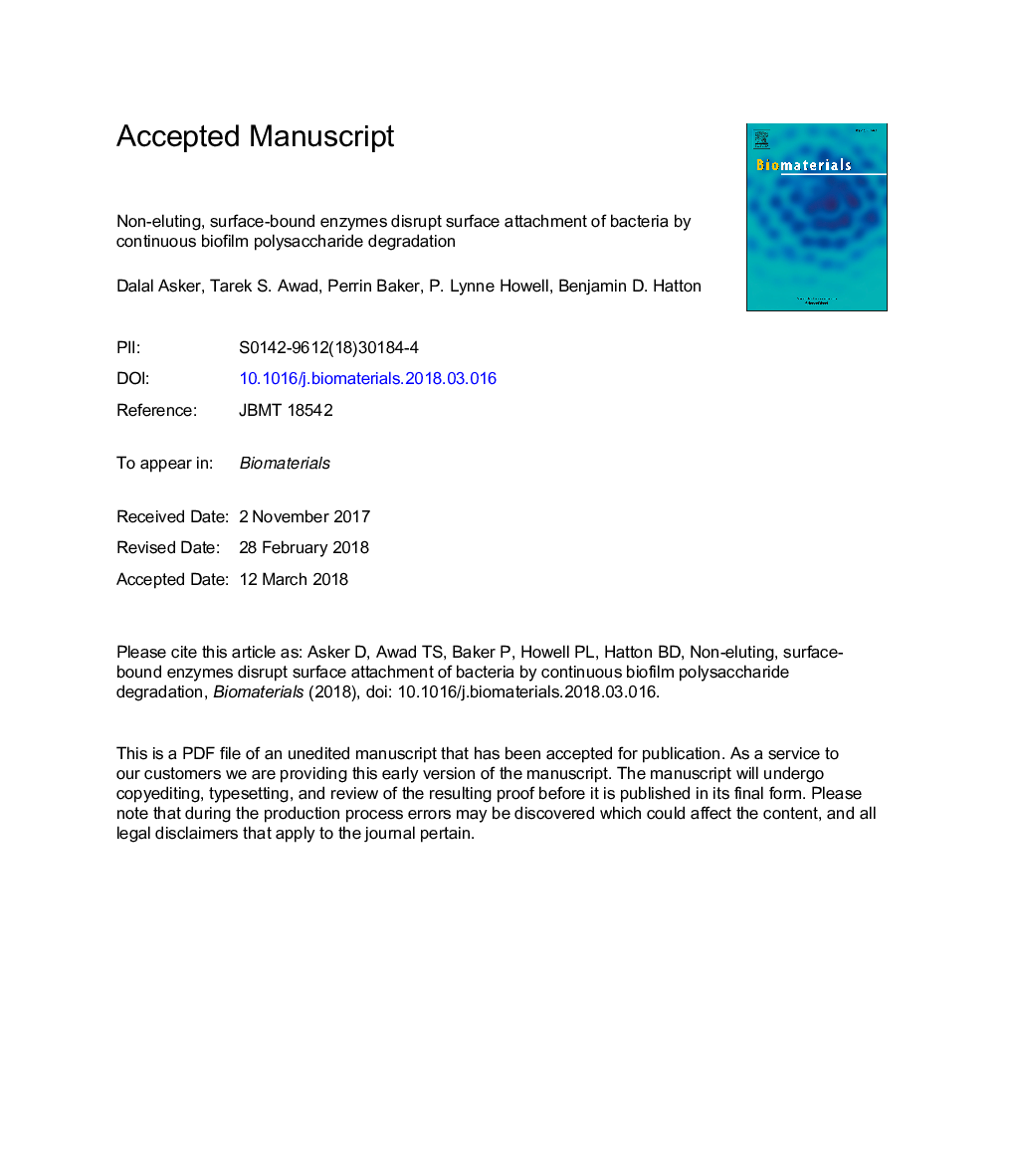| کد مقاله | کد نشریه | سال انتشار | مقاله انگلیسی | نسخه تمام متن |
|---|---|---|---|---|
| 6484541 | 1416100 | 2018 | 29 صفحه PDF | دانلود رایگان |
عنوان انگلیسی مقاله ISI
Non-eluting, surface-bound enzymes disrupt surface attachment of bacteria by continuous biofilm polysaccharide degradation
ترجمه فارسی عنوان
آنزیم های غیر فعال کننده، سطوح محدود، باعث تخریب سطح اتصال باکتری ها توسط تخریب پلی ساکارید بیوفیلم مداوم می شوند
دانلود مقاله + سفارش ترجمه
دانلود مقاله ISI انگلیسی
رایگان برای ایرانیان
کلمات کلیدی
بیوفیلم ها، اگزوپولیساکاریدها، سودوموناس آئروژینوزا، گلیکوزید هیدرولاز، بیومارکرهای،
موضوعات مرتبط
مهندسی و علوم پایه
مهندسی شیمی
بیو مهندسی (مهندسی زیستی)
چکیده انگلیسی
Bacterial colonization and biofilm formation on surfaces are typically mediated by the deposition of exopolysaccharides and conditioning protein layers. Pseudomonas aeruginosa is a nosocomial opportunistic pathogen that utilizes strain-specific exopolysaccharides such as Psl, Pel or alginate for both initial surface attachment and biofilm formation. To generate surfaces that resist P. aeruginosa colonization, we covalently bound a Psl-specific glycoside hydrolase (PslGh) to several, chemically-distinct surfaces using amine functionalization (APTMS) and glutaraldehyde (GDA) linking. In situ quartz crystal microbalance (QCM) experiments and fluorescence microscopy demonstrated a complete lack of Psl adsorption on the PslGh-bound surfaces. Covalently-bound PslGh was also found to significantly reduce P. aeruginosa surface attachment and biofilm formation over extended growth periods (8 days). The PslGh surfaces showed a â¼99.9% (â¼3-log) reduction in surface associated bacteria compared to control (untreated) surfaces, or those treated with inactive enzyme. This work demonstrates a non-eluting 'bioactive' surface that specifically targets a mechanism of cell adhesion, and that surface-bound glycoside hydrolase can significantly reduce surface colonization of bacteria through local, continuous enzymatic degradation of exopolysaccharide (Psl). These results have significant implications for the surface design of medical devices to keep bacteria in a planktonic state, and therefore susceptible to antibiotics and antimicrobials.
ناشر
Database: Elsevier - ScienceDirect (ساینس دایرکت)
Journal: Biomaterials - Volume 167, June 2018, Pages 168-176
Journal: Biomaterials - Volume 167, June 2018, Pages 168-176
نویسندگان
Dalal Asker, Tarek S. Awad, Perrin Baker, P. Lynne Howell, Benjamin D. Hatton,
